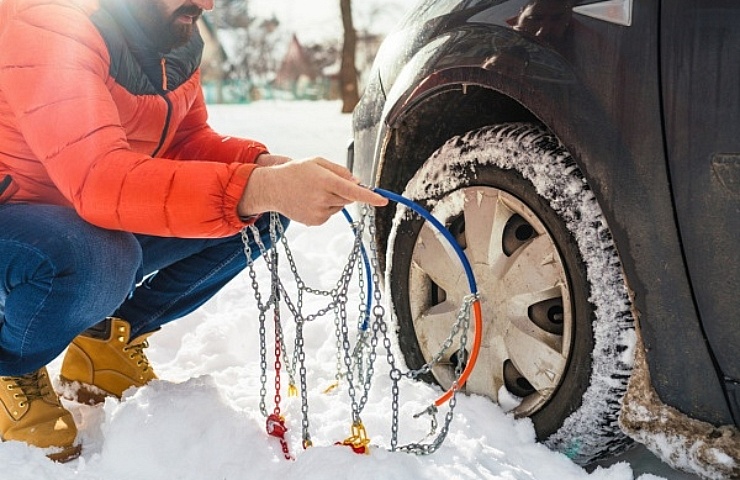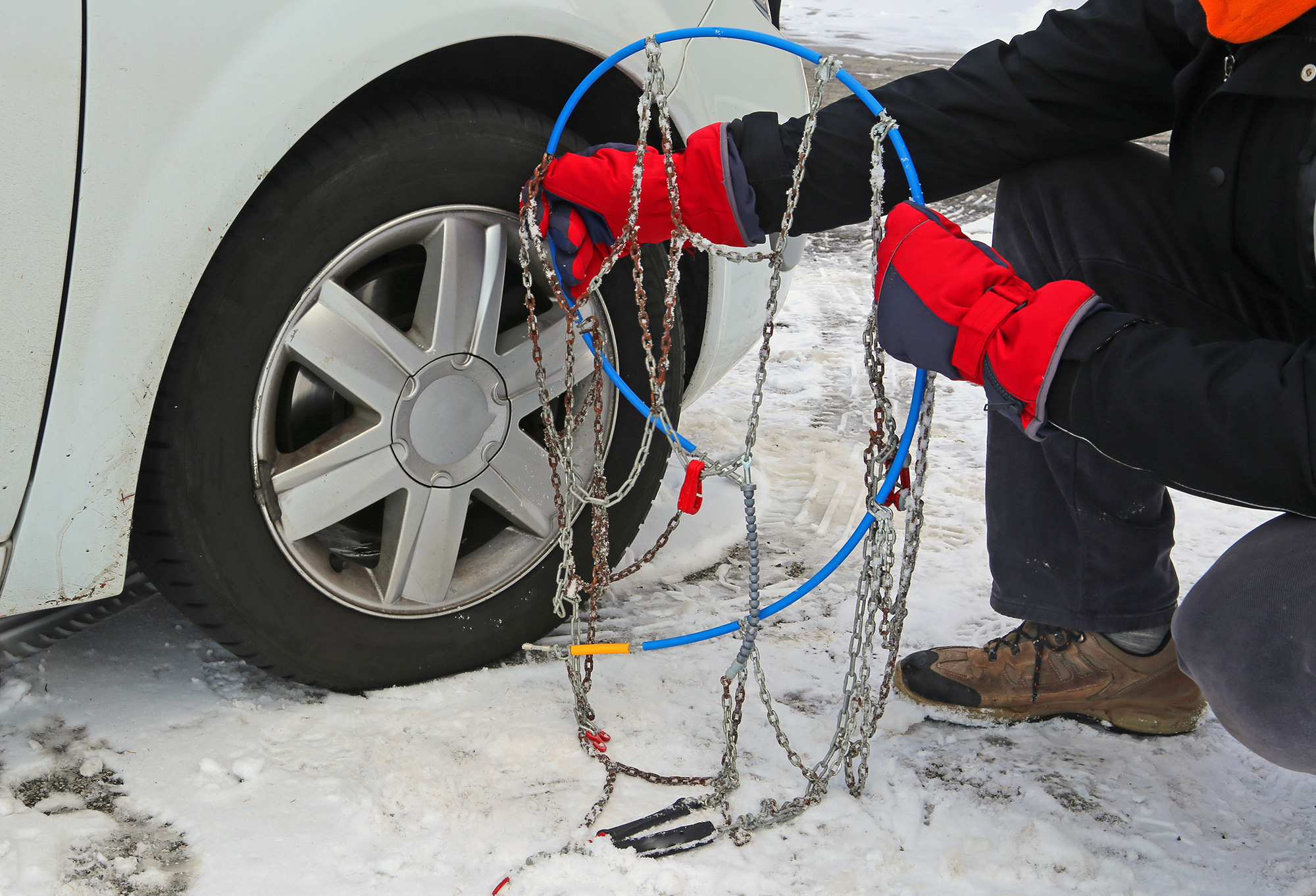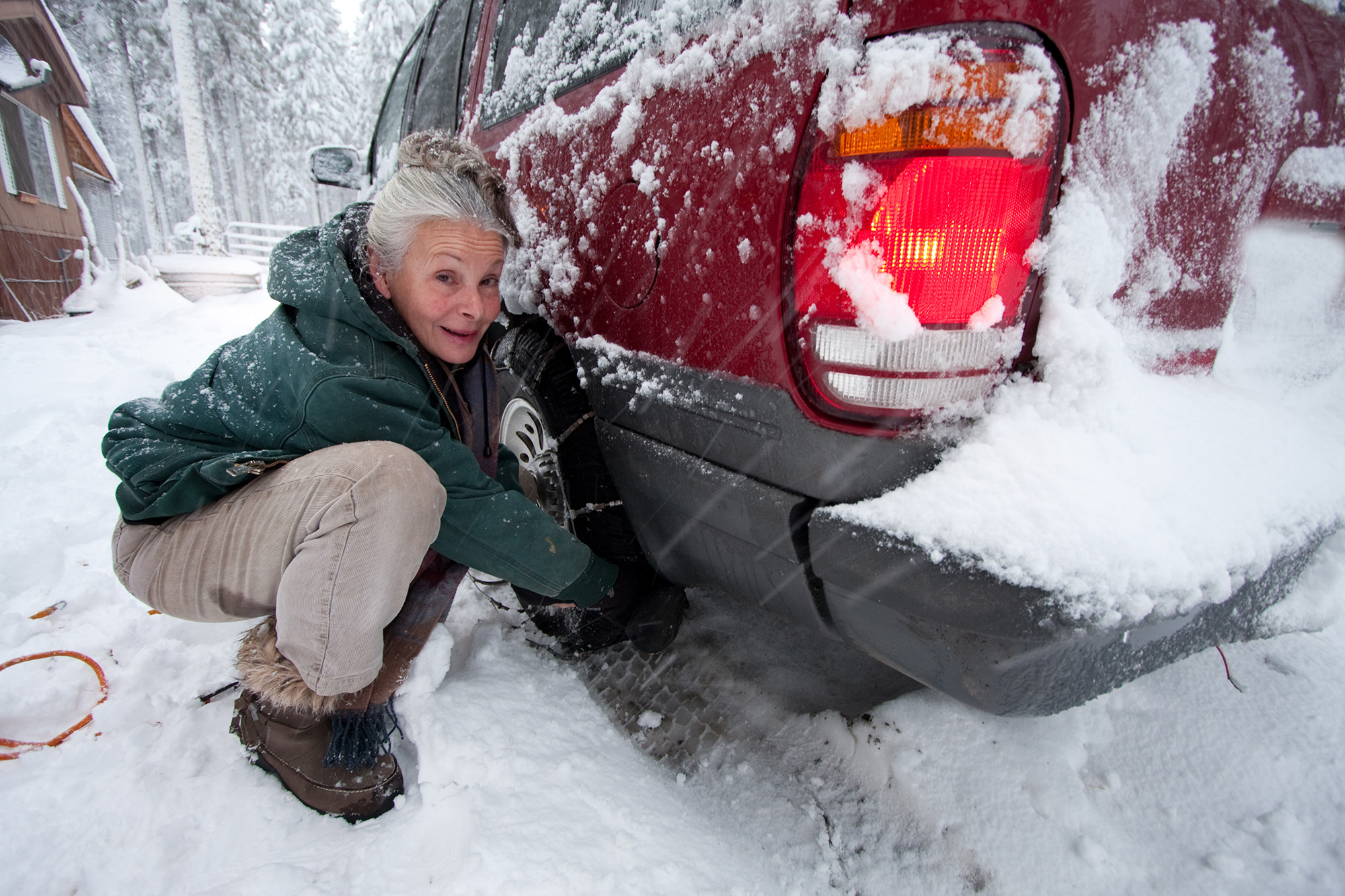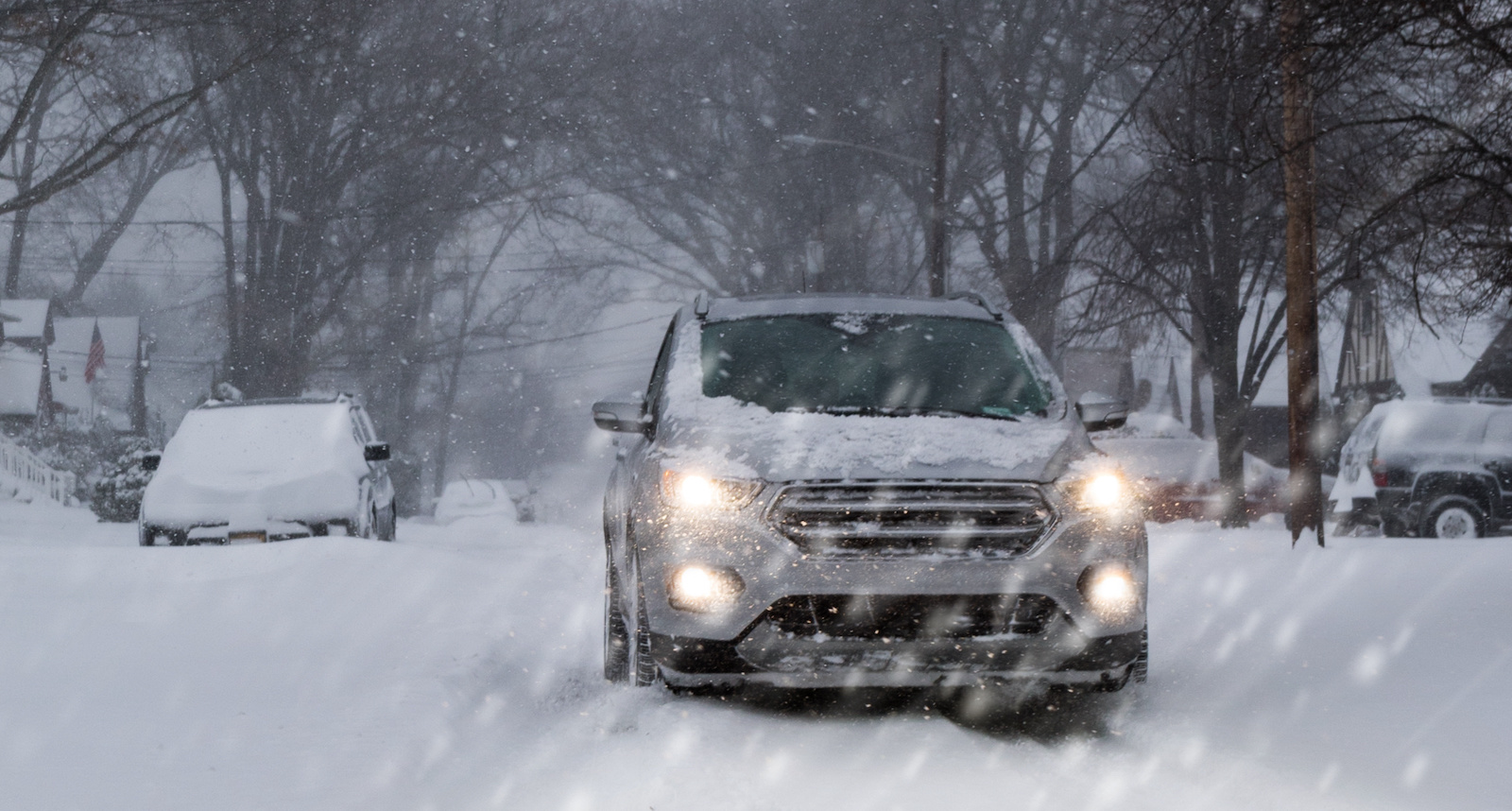Contents
Types of Tire Chains
The terminology can be confusing. There are two main types of snow-traction devices.
- Snow chains are the most effective but cost more.
Snow chains are a net of metal links that encase your tire. They are available in a range of sizes to fit various tires. It’s essential to get a set that fits your vehicle. - Chain cables are the most convenient and less expensive.
Although they look similar and perform the same task, tire cables differ from chains. They’re made of steel cable encased in an alloy. Like snow chains, they’re available in different sizes to fit various tires.
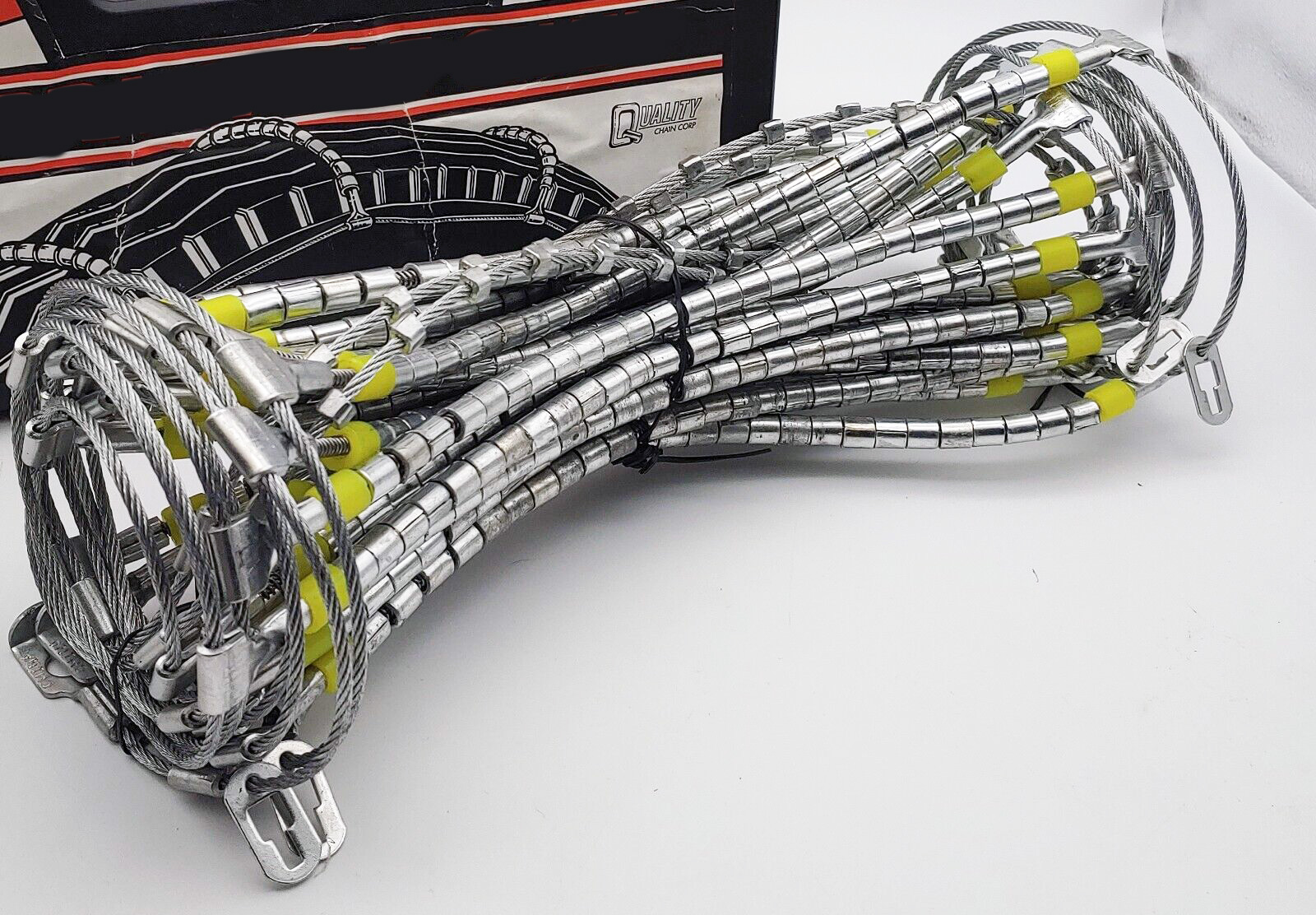
Tire cables are different than chains.
There are additional options. Read this: How to Equip Your Tires for Snow and Ice
Before buying a set of tire chains, investigate if your state has laws about when you can, should, or absolutely must use tire chains—and when it’s not permitted.
Some states post signs to indicate that tire chains are needed. Others leave it up to the driver but suggest that you may use chains if conditions warrant. Always confirm the regulations on your state’s official Department of Transportation website.
Snow Chains or Chain Cables?
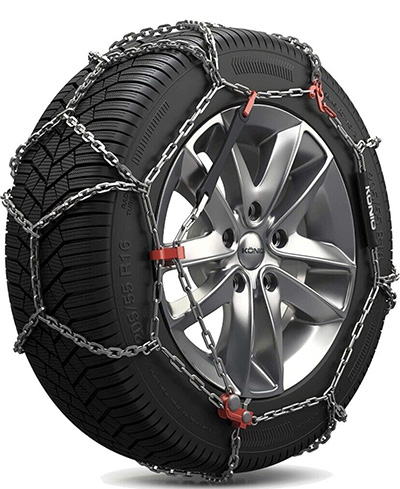
Snow chains
Snow chains are heavier than cables and can be trickier to install. They also require that you drive no faster than 30 miles per hour. The main advantage of chains is durability. They’re a better choice if you frequently drive in conditions where snow chains are needed.
Snow cables are lighter and easier to install. They’re also less likely to damage your vehicle if one of the cables breaks. They don’t have the same speed limitations, but they aren’t as durable as snow chains. However, they’re a great choice if you only need them occasionally.
Whether you buy chains or cables, please don’t wait until you’re on the side of the road in nasty driving conditions to put them on for the first time. Practice on a dry surface until you are completely comfortable with the process. Refer to the instructions provided, as chains differ in design.
Shop now for tire chainsHow to Install Tire Chains
Chains must be attached to the wheels on the drive axle. First, it’s necessary to know whether your vehicle is two-wheel—front, rear, or four-wheel drive.
- Installing chains only in the front can cause oversteer, where the rear wheels swing around in a turn.
- If you install them only in the back, you may experience understeer.
- Four-wheel drive vehicles should have chains installed on all tires.
Be sure to check your owner’s manual for your vehicle’s recommendations. Remember, snow chains can cause severe damage to your vehicle if not installed correctly. Some vehicles with selectable driving modes may need to be in the appropriate mode when using snow chains.
Safety first. If you’re on the road, pull off as far as possible to a safe shoulder or, preferably, a parking lot. Put flashing hazard lights on and set out reflective warning hazard signs at the front and rear of the vehicle.
- Lay the chains out, railroad-style, in the correct orientation in front of or behind the wheels.
- Slowly drive the vehicle until the wheels are midway over the chains. The help of an assistant to guide the driver is recommended at this step.
- Once over the chains, put the vehicle in Park and apply the parking brake.
- Swing each end of the chains over the tire so the ends join at the top. From here, hook the ends of the chains together.
- Finally, there should be a special bungee cord with sliding hooks attached. These go outside the wheel and take up the slack between the chains and the tire. The bungee stretches across the rim and attaches to the outer end of the chain via the hooks. Again, make sure that you secure the chains to the drive wheels.
How to Install Snow Cables
Again, safety first. Pull off as far as possible to a safe shoulder or a parking lot. Put your flashing hazard lights on and set out your reflective warning hazard signs at the front and rear of the vehicle.
- Lay the cable out, railroad style, in the correct orientation in front of or behind the wheels. Be sure the “L” hooks are facing away from the tires. Once laid out, slowly drive the vehicle until the wheels are midway over the cables.
- Connect the inside cables first, then the outside hooks.
- Now that the outside and inside are hooked, install the tensioner on the outside of the cables. The tensioner ensures that the cables do not come loose while driving.
- Lastly, drive the vehicle about one car length forward and recheck the cables to ensure they are secure.
How to Drive With Snow Cables or Chains
While driving with chains or cables, listen for unusual sounds like flapping or metal on metal. Loose or broken cables or chains can hit components on your vehicle, causing significant damage. To avoid breaking chains and damaging your vehicle, follow these recommendations:
- Stay within the miles-per-hour recommendation of the cable or chain.
- Don’t drive on bare pavement.
- Don’t brake or start too suddenly. This could cause the wheels to lock or spin.
Removing Cables or Chains
Find a safe location to remove cables or chains and reverse the installation process. Lay your cables or chains out somewhere they can dry so that they won’t rust when you repack them. Also, inspect them for any damage or unusual wear.
One last recommendation is to assemble a winter road safety kit with warm gloves, appropriate clothing like a waterproof coat or jacket, a headband flashlight, reflective safety triangles, and chains or cables.

